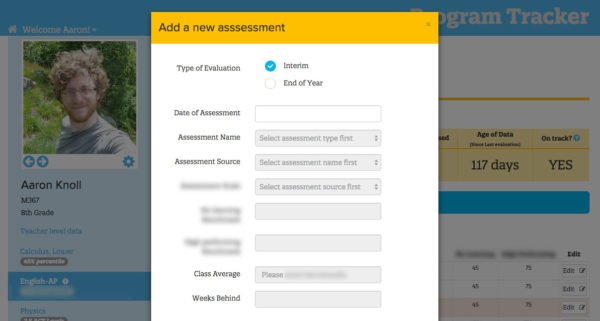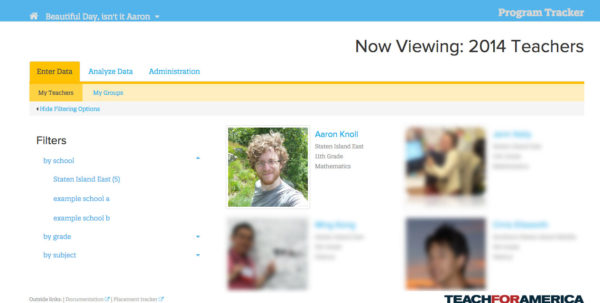Teach For America employs coaches to help its teachers refine their craft over the course of their time in the corps. These coaches are not only responsible for tracking metrics pertinent to their teachers’ progress, they also record data points that are essential for organizational compliance. Coaches often meet with more than one teacher at more than one school over the course of a given day. This has led to the proliferation of informal tracking tools and lag times between data points and data entry. Compliance tracker was designed to be responsive, in order to accommodate a wide-range of on-the-go data entry scenarios from “in a car in a parking lot” to “in an office on a dedicated data entry day.”

My Role
I worked with a researcher who collected information on coaching practice through contextual study. I worked with that researcher to translate study findings into a fully interactive prototype which we were able to pilot with coaches. I worked closely with business analysts and business partners to test the product, and with software developers to fully implement the flows from the prototype. In the process, I also worked within the marketing team’s new brand guidelines to design a new set of visual design patterns for internal Teach For America business applications.
I did: interaction design, high-fidelity prototyping and visual design.

Let me tell you a story…
For a long time the Compliance Tracker was built to simulate the spreadsheets that coaches informally used to track information. Study of coaching practice revealed that while spreadsheets optimized redundant data entry tasks, the barrier to capturing live data was actually that the spreadsheet was misaligned with the coach’s mental model. Rather than a compliance task, coaches viewed these data points as “the story of a person.” More important than the snapshot of an entire group of teacher’s was a snapshot of a person’s story over their time in the classroom. By a simple calculation of “clicks,” it took more mouse clicks to enter the same data. But when evaluated through sentiment, Compliance Tracker helped radically change the user sentiment about these compliance tasks. Instead of something that “I have to do,” coaches began to talk about compliance data points in the same way they talked about skill progress data points. We saw marked improvements in data quality, data coverage, and overall user satisfaction nearly immediately and in subsequent month over month and year over year evaluations.

